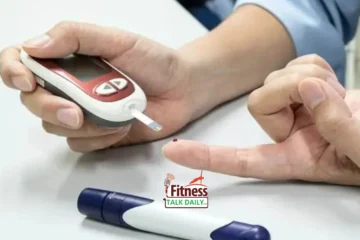Lately, cupping therapy has been sweeping across the United States, catching the attention of everyone from spa-goers to health enthusiasts. This old-school practice uses suction cups on the skin to tackle pain, calm inflammation, get the blood flowing, and leave you feeling relaxed and refreshed. People love it for loosening up tight muscles, boosting circulation, and just plain feeling better. Sure, it’s having a big moment right now, but cupping’s been around forever—and in the U.S., it’s starting to feel like a regular part of staying healthy. You’ll spot it on the menu at fancy spas and local wellness spots alike. One tip, though: if you’re giving it a go, make sure you pick someone who knows what they’re doing.
What’s Cupping Therapy All About?
Picture this: little cups—maybe glass, silicone, bamboo, or plastic—get placed on your skin, and a bit of suction pulls everything upward. It’s like a mini workout for your blood flow, helping your body ditch toxins through the lymphatic system. Folks turn to it for everyday stuff like a sore back, a touch of stress, or even feeling a little puffy from inflammation. The suction draws blood to the surface, speeds things up under the skin, and helps flush out the junk your body doesn’t need.
Where Did Cupping Come From?
This isn’t some trendy new invention—cupping goes way back. The ancient Egyptians were onto it around 1550 BCE, scribbling about it in the Ebers Papyrus as a fix for aches, fevers, and cramps. Over in China, starting around 28 CE, it teamed up with acupuncture, and a guy named Ge Hong, a big-deal herbalist from the Jin Dynasty, swore by it. In the Middle East, it’s called Hijama—even Prophet Muhammad gave it a thumbs-up in his writings. And in Greece? Hippocrates, the father of medicine, used it for everything from organ troubles to stiff joints. It’s wild how something so old still feels fresh today.
How Does It Work?
Here’s the gist: cups go on your skin, sometimes heated with a quick flame to create a vacuum as they cool. That suction tugs your skin up, popping tiny blood vessels underneath. Blood rushes in, sweeps away the gunk, and gets things moving. It’s straightforward but does the trick, leaving you with better flow and a lighter feel.
Different Ways to Cup
Cupping’s not one-size-fits-all—it comes in a bunch of styles:
- Cup Choices: Old-timers used bamboo; now, it’s more likely glass, silicone, or plastic in the States.
- How It’s Done:
- Fire Cupping: A flame warms the cup, then it sticks to your skin—great for easing tight spots.
- Manual Suction: Someone squeezes the cup by hand and slaps it on—easy peasy.
- Automatic Suction: Machines take over with steady, high-tech suction.
- Suction Levels: You’ve got light for chilling out, strong for deep relief, or even a pulsing rhythm.
- Styles:
- Dry Cupping: Just suction—super common here and no fuss.
- Wet Cupping: Suction, then tiny cuts to let out blood, usually on meaty spots like your back.
- Flash or Massage Cupping: Quick hits or sliding cups for a rubdown vibe.
- Extras: Some toss in needles, herbs, or even lasers; others zero in on your face, belly, or sore sports muscles.
Why People Love It
Cupping’s got a fan club for a reason. It’s known to:
- Kick your circulation into gear and settle your stomach.
- Give your immune system a nudge and melt muscle knots.
- Dial down pain, migraines, or that nagging worry in your head.
- Clear out toxins and maybe even smooth out those pesky veins.
Any Catch?
It’s mostly safe, but you might end up with some temporary souvenirs—little bruises or red spots. A few people feel wiped out or queasy afterward, and if it’s not done right, you could see a burn or scar. That’s why going to someone legit is a must.
Who’s Doing the Cupping?
Around here, you’ll find acupuncturists, chiropractors, massage folks, physical therapists, and even some doctors offering it. Just peek at their background before you book.
What’s the price tag?
Depending on who’s holding the cups, where you are, and how many sessions you need, it’ll run you anywhere from $50 to $300 a pop. One visit might do it, or you might sign up for a few.
Your Cupping Questions, Sorted
- Do doctors like it? Plenty do, especially for unwinding or small aches.
- Does it sting? Nah, maybe a weird pull, but nothing bad.
- Is it risky? Not really—it’s pretty tame with the right hands.
- Are blood clots a worry? No proof of that, but steer clear if you’re on thinners.
- Nerve trouble? Nope, it’s all about fixing, not breaking.
- Prep and recovery? Skip big meals before, drink water, and nap after.
- When does it kick in? It could be instant or take a bit—it depends on you.
- Fat Buster? Maybe a tiny bit, with the right diet.
- Every day? Once a week’s the norm, more if the pain’s bugging you.
- Better than a massage? Cupping heals; massage kneads.
- Does it deliver? Tons of people say it’s a game-changer for pain.
- Home version? Sure, grab a kit and give it a whirl.
- How long do marks stick? A few days to a couple of weeks.
- How quickly is it? Five to ten minutes, tops.
- Best place? Back is the star; chest comes next.
- Why feel funky after? Your body’s tossing out toxins—fine.
Cupping’s got this cool mix of old-world charm and new-school buzz. Whether you’re after a breather or a fix for what’s aching, it’s worth a shot. Just find a pro, kick back, and see what it does for you!




